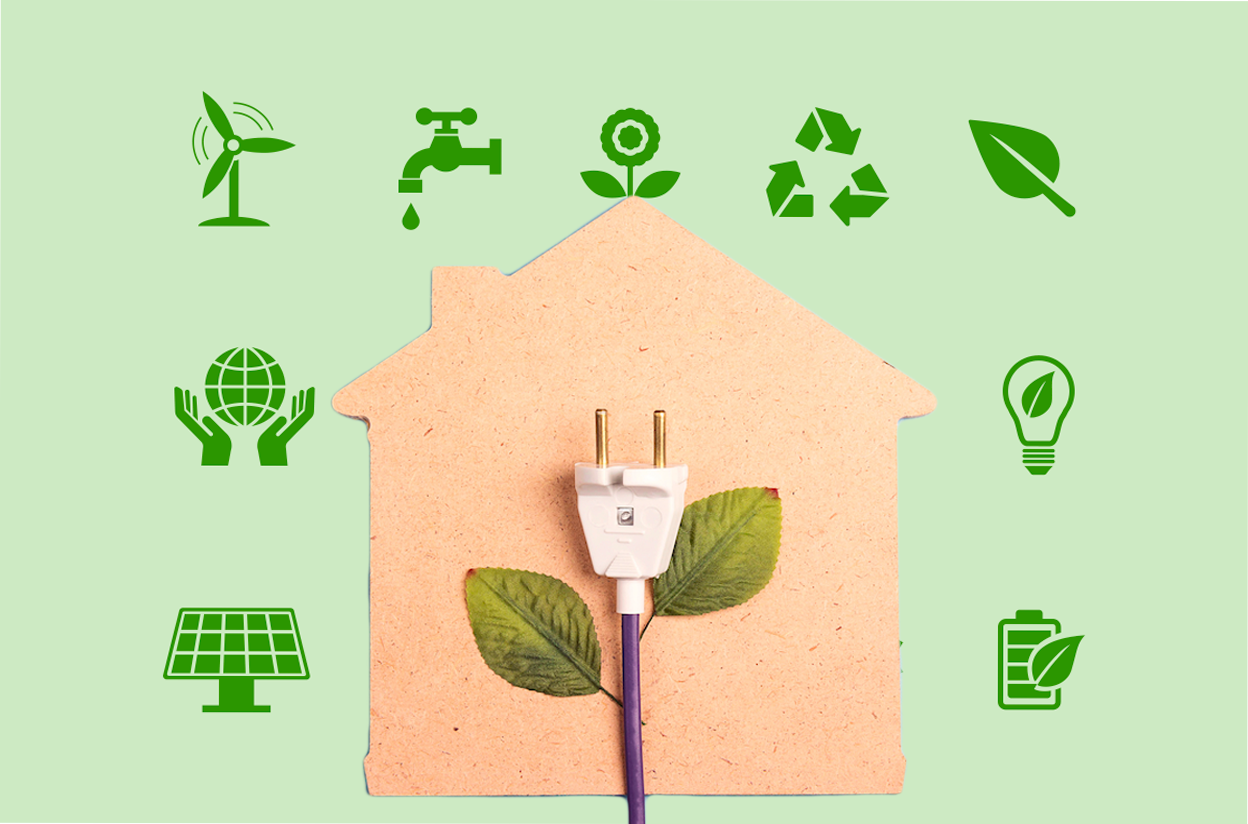Time to read : 3 Minutes
How Can You Climate Proof Your Home?
Here are three things we know:
Climate change is here.
It will be expensive.
And your home will be affected.
👌 But don’t despair, acting now can help protect your home against the threats of climate change, and save you money in the long run.
The hard truth about climate change
So what exactly are we in for?
According to Australian government sources, the next handful of years could bring:
🌡️ More days of extreme heat in summer. 🔥 Longer, more extreme fire seasons. 💨 More high-intensity, damaging storms. 🥵 Extended periods of drought.
And relieving the heat of climate change may not be as simple as just turning up the air con:
Household energy bills are predicted to increase by at least 35% in 2023.
The risk of rolling power blackouts and electricity shortages may increase over the next two years.
But it’s not all doom and gloom. Some homeowners are taking steps now to future-proof their homes against climate change.
For many, the goal is to:
🌳 Create a source of cheaper, more sustainable household energy. 😎 Keep homes comfortable without relying on fossil fuels. 🏠 Protect against damaging winds and flooding rains. 🌷 Increase fire resistance and drought tolerance .
How to fight the four major threats of climate change
Okay, so that all sounds fine and dandy – but what are the real, tangible things you can do now to create a cooler, safer home that’s cheaper to run?
Threat #1: Electricity shortages
As we transition to renewables, more options for energy are also now available to homeowners.
🔋 Adding a rechargeable battery to your system can provide your home with an off-grid source of free, sustainable energy.
🌞 Roof-top solar panels cost between about $4,000 and $10,000, and you’ll need to add between about $5,000 and $20,000 for a battery and inverter.
🌊 Riverbank properties could consider utilising hydropower for their energy needs too.
🌬️ Wind turbines are also becoming more popular for homeowners who want to be self reliant as well.
Threat #2: Rising temperatures
Energy-hungry air conditioners are not the only way to keep your home cool as the planet warms.
🌱 Why not consider installing some green walls? Growing vines and other plants up external wall trellises can absorb heat and reduce the need to pump the air con.
🏡 Upgrading your wall and ceiling insulation is another way to keep the temperature down without adding zeros to your energy bills.
🪟 The same goes for your windows – upgrading to double-glazed windows can help keep heat out. Or choose UV-rated block-out blinds instead.
❄️ You also might want to think about ditching the carpet. Polished concrete and tiled floors tend to increase thermal mass – which means cooler summers.
Threat #3: Extreme weather events
There are some simple, relatively inexpensive things you can do to make your home more fire resistant.
🧑🚒 Installing metal gutter guards can help keep flammable debris out of your gutters, and putting in a gutter-mounted fire sprinkler system can help reduce the threat of ember attack.
🧯 If your budget can stretch a little further, it may be worth retrofitting fire-rated external wall cladding to take your home to the next level.
⛈️ Loose or broken roof tiles can be a nightmare in storms, so consider regularly inspecting your roof for damage. And if you live in storm-prone areas, galvanised steel cyclone straps for your roof can keep your home safer in wild winds.
🌊 Protecting your home from flooding is more of a landscaping issue. If flood water is likely to come from a nearby river or dam, you might consider digging permanent trenches to redirect the flow. Or if rising underground water is the problem, gardens can be used to absorb as much water as possible.
Threat #4: Extended droughts
The Climate College says that Australia is currently experiencing the worst droughts in 800 years but thankfully there are things you can do to manage it.
☔ Capturing stormwater run-off from your roof in a water tank can provide an independent source of water you can use to keep your gardens healthy during periods of drought.
🪣 In fact, in some areas you may be required to install a rainwater system if you are doing a substantial reno.
🧑🌾 Drip irrigation systems also generally use less water than watering your garden with a sprinkler. And why not consider replacing your thirsty lawn with drought-tolerant native plants?
The bottom line
The world is changing and so are our homes.
If you invest in protecting your home against the threats of climate change now, you’ll likely be safer in the long run.
💰 And you could even keep more money in your pocket with a home that’s cheaper to run too.
Financial Disclaimer: The information contained on this web page is of general nature only and has been prepared without taking into consideration your objectives, needs and financial situation. You should check with a financial professional before making any decisions. Any opinions expressed within an article are those of the author and do not specifically reflect the views of Compare Club Australia Pty Ltd.
